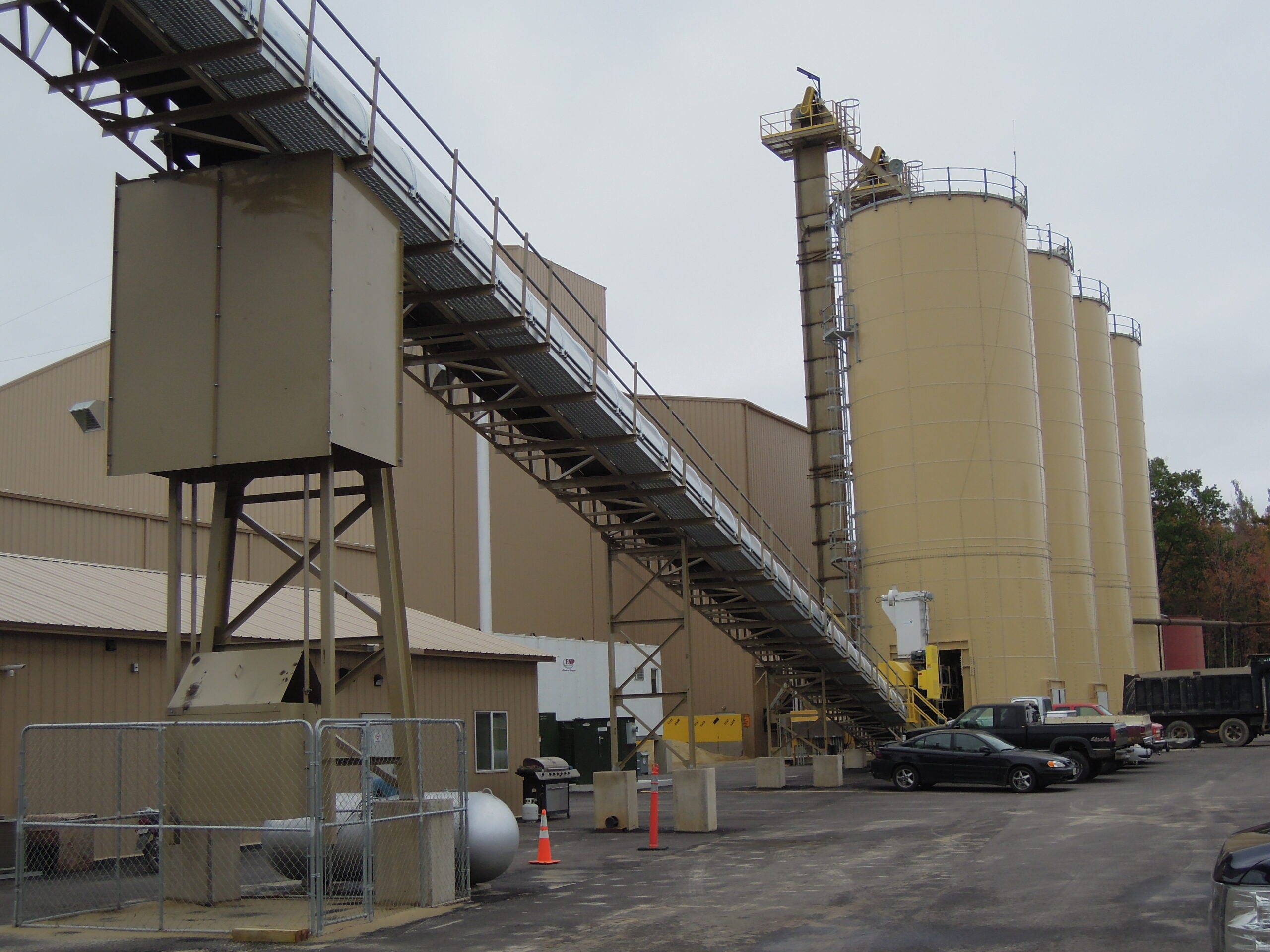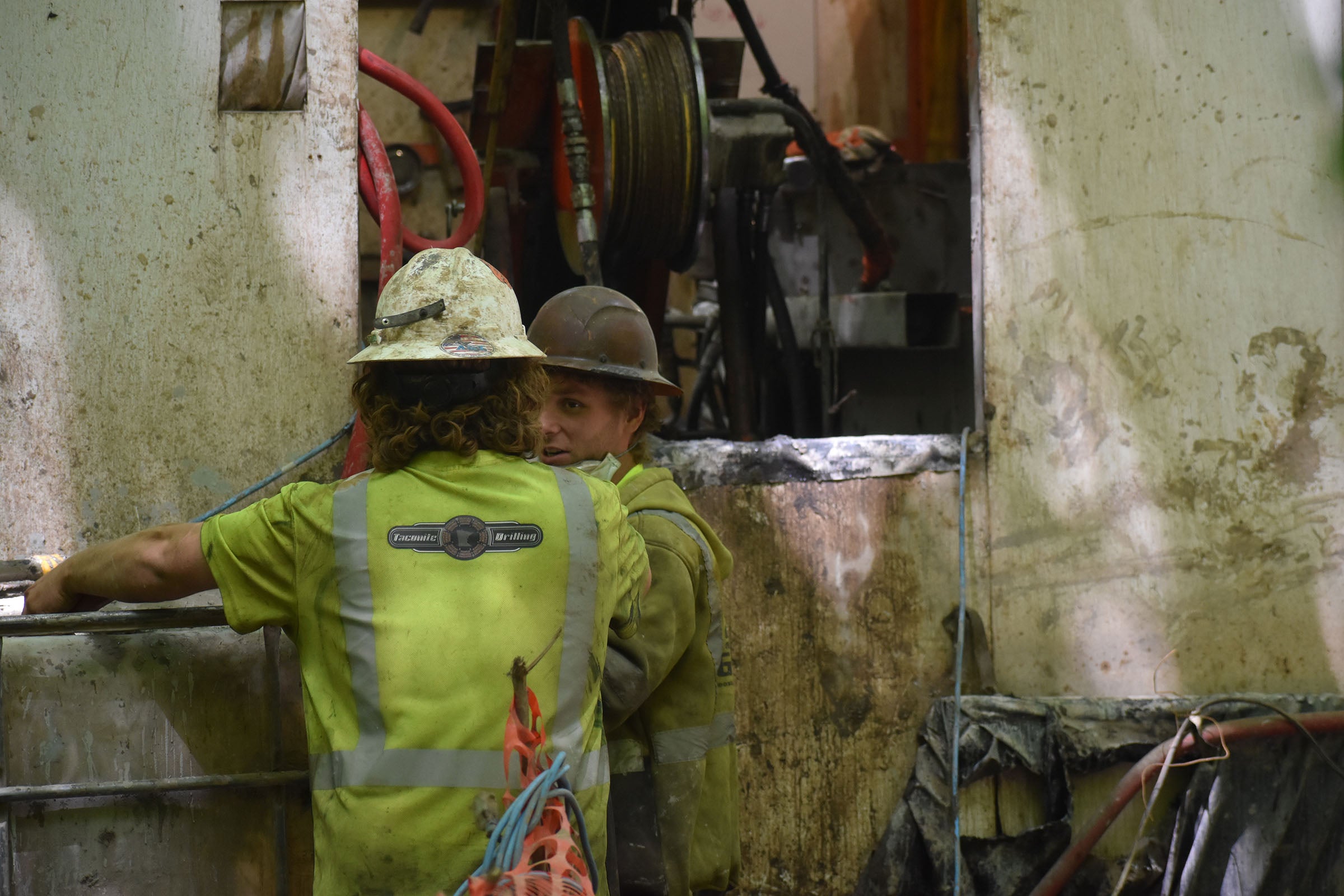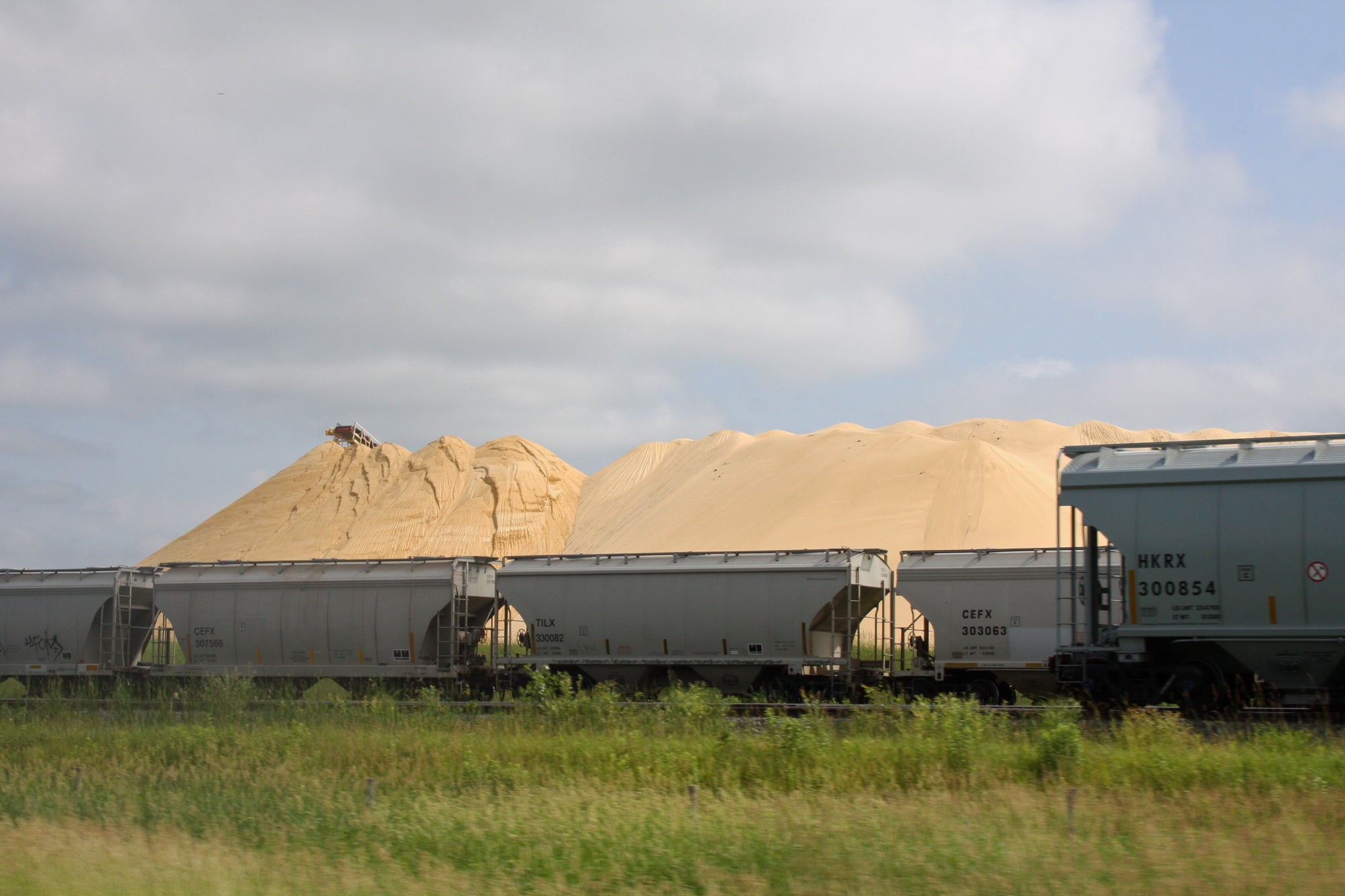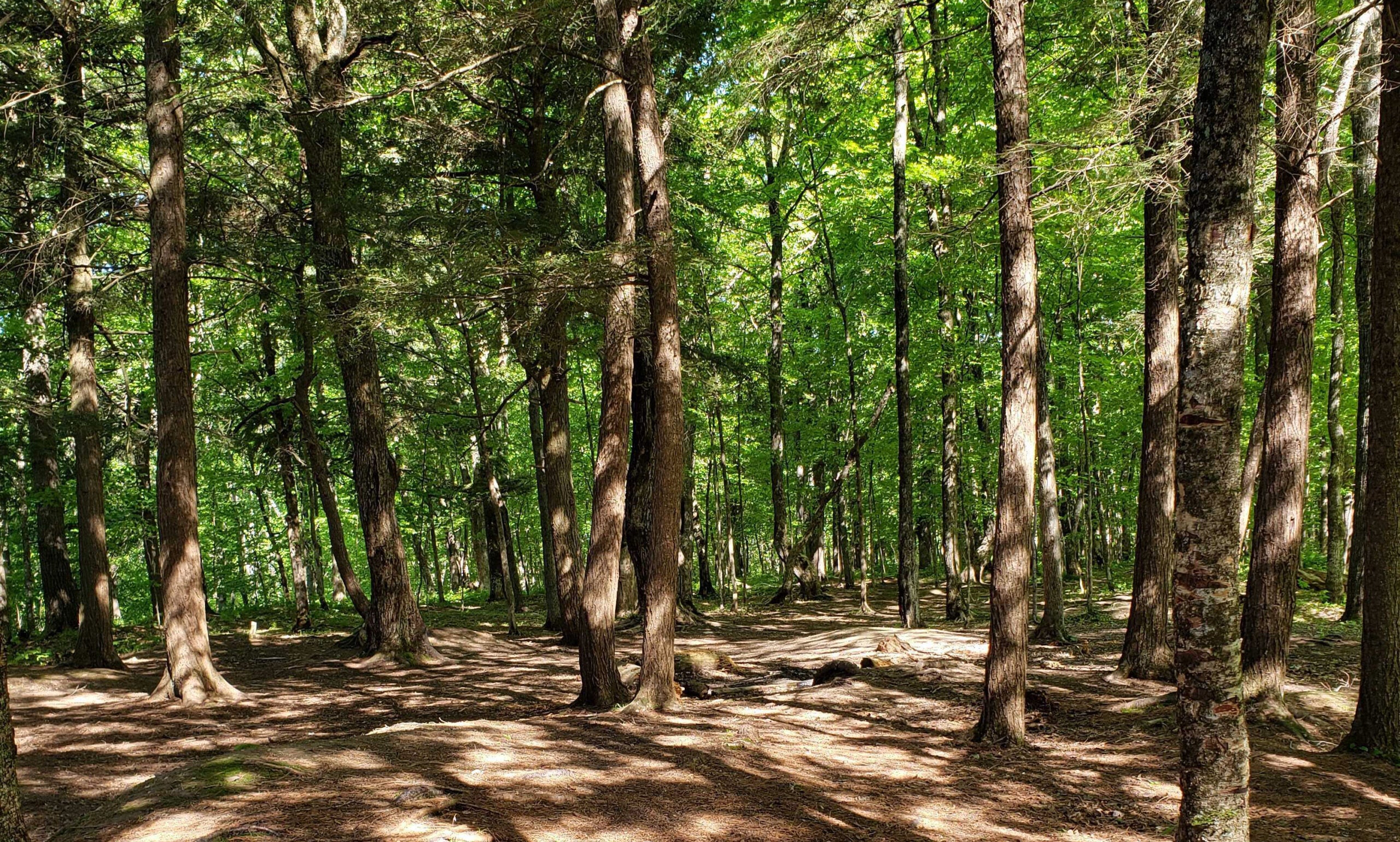A state review of a potential frac sand mine reclamation project in Chippewa County has found high concentrations of arsenic and other heavy metals at the site and left the Wisconsin Department of Natural Resources with “reasonable concern” groundwater contamination may have occurred.
On Nov. 11, the DNR responded to a request from Chippewa County for a “technical review” of a plan to clean up ponds at a frac sand mining and processing facility owned by Superior Silica Sands in the Town of Auburn. Known as process water ponds, the basins allow muds that are washed from grains of frac sand to settle from water that is reused in the process.
A letter from DNR Nonmetallic Mining coordinator Roberta Walls to Chippewa County Director of Conservation Dan Masterpole said mud samples from the ponds exceeded state safety levels for arsenic, a naturally occurring metal listed as a carcinogen by the Environmental Protection Agency. Officials with Chippewa County didn’t immediately respond to requests for comment.
News with a little more humanity
WPR’s “Wisconsin Today” newsletter keeps you connected to the state you love without feeling overwhelmed. No paywall. No agenda. No corporate filter.
In an interview with WPR, Dave Rozeboom, DNR northern region remediation and redevelopment program manager, said administrative code sets an arsenic “Residual Contact Level” (RCL) of three parts per million (ppm) while a pair of samples taken from holding ponds at the mine had RCLs of 17.7 ppm and 21.6 ppm.
“So, these are certainly above our industrial direct contact standards,” said Rozeboom.
But because arsenic is a naturally occurring compound, Rozeboom said, the samples taken from Superior Silica Sands’ ponds have to be evaluated against background levels, which will require more testing.
In 2013, the DNR published a map showing background arsenic levels from 664 statewide soil samples. None of those taken in the vicinity of the Chippewa County mine showed arsenic levels higher than 8.3 ppm.
Even if mud from the ponds has arsenic concentrations higher than those found offsite, Rozeboom said it wouldn’t require immediate cleanup so long as the mine was still operating under a valid permit. He said that’s because the material is underwater and the DNR assumes workers wouldn’t be working in a process water pond.
“But if that facility closes and the permit is no longer applicable, part of the reclamation plan must require management of that material,” said Rozeboom.
He said a common way companies have managed soil contaminated with excess arsenic is by capping it with soil or other material.
On July 5, Chippewa County suspended Superior Silica Sands’ mining permit after failed attempts to secure an additional $1.6 million in mine reclamation bonds from the company. The county has extended the permit suspension by 30 day increments since then.
Mining companies are required to post reclamation bonds prior to mining and are used by local governments to pay for cleanup if companies go out of business and mines are abandoned. On July 15, Superior Silica Sands’ parent company Emerge Energy Services filed for bankruptcy. The company hasn’t responded to multiple requests for comment since the filing.
If Chippewa County revokes the mining permit for Superior Silica Sands, they’ll be required to use whatever existing reclamation bonds are available to clean up the site.
DNR: Reasonable Concern Groundwater Contaminated
The DNR’s Nov. 11 letter to Chippewa County noted the agency also had “reasonable concern that contamination to groundwater can or may have occurred as a result of operations.” The claim is based on samples of water taken from the Superior Silica Sands’ ponds also containing “elevated levels of aluminum, arsenic, chromium, lead, and manganese” that indicate the site is potentially in violation of state groundwater standards.
The letter describes potential “mounding” beneath the ponds. Rozeboom said that means monitoring wells installed by the company have detected “higher than natural elevation” of the groundwater table near the ponds indicating water is seeping from the ponds into the aquifer.
“If you have a stormwater pond that is above the elevation of groundwater and that pond is not properly lined to prevent drainage, it can be acting as a recharge point to the groundwater, which may be observed as a high spot in the groundwater elevation,” said Rozeboom.
Roberta Walls, who wrote the DNR letter to Chippewa County, told WPR that more data needs to be gathered to see whether the concentrations of metals found in the pond water are also making it into the groundwater, potentially with additional monitoring requirements.
“The best way to approach that would be to first determine what the pathways are from the pond into the groundwater,” Walls said. “We’d have to evaluate what potential there is for movement of those levels in the ponds to make it to groundwater.”
DNR Groundwater Study Stalled
The DNR has known about the potential of high concentrations of metals produced by frac sand mines since at least 2013 when samples collected from wastewater and stormwater ponds at facilities around the state showed the naturally occurring elements built up over time.
In 2016, the agency announced it was working with stakeholders, including the sand mining industry, to develop a study to determine if processing ponds at frac sand operations had the potential to contaminate groundwater. Walls said a study scope was completed but the DNR was only able to secure about 30 percent of the estimated $100,000 in funds needed for the first phase of the study. She said the agency is still interested in testing potential groundwater impacts from sand mining process water.
Walls said the latest results from Superior Silica Sands along with the samples from 2013 and tests from data from frac sand mine spills, including the release of 10 million gallons of process water in 2018, will be considered as the DNR revises its wastewater permit in 2021.
Reclamation Study Revisited
The presence of arsenic and other metals in mud found at the Chippewa County mine site adds a new twist to a five-year mine reclamation research collaboration involving the University of Wisconsin-River Falls, the county land conservation and forest management department and Superior Silica Sands.
Between 2013 and 2018, UW-River Falls geology and soil science professor Holly Dolliver worked with students to gather soil samples and design test plots to study which types of mine reclamation would be best suited to the area.
Along the way, the team mixed sandy topsoil used in reclamation test plots with mud leftover from frac sand processing. The premise was that the mud would increase the soil’s ability to hold water, which could benefit native plants and grasses.
In an interview with WPR, Dolliver said in the early days of the study, heavy metal concentrations at frac sand mines weren’t on her team’s radar. She said the mud they used didn’t come from the ponds mentioned in the DNR letter. But Dolliver said that in 2016, the team began testing for them and found concentrations of a wide panel of metals around 150 percent higher than background levels.
Dolliver said her team then tested whether metals from sediments used in reclamation were collecting in water passing through the soil. To the team’s surprise, Dolliver said water moving through soils containing waste-mud from the mine had lower metal concentrations than control sites that hadn’t been mined.
“What we ultimately figured out through some laboratory studies is that there’s probably some complex interactions between the metals and the fine material,” said Dolliver. “So, the fine material has the capacity to adsorb, essentially to kind of secure those metals.”
The DNR’s Walls said the agency is interested in Dolliver’s findings and would like to learn more about the “long-term efficacy” of the study effort.
Wisconsin Public Radio, © Copyright 2025, Board of Regents of the University of Wisconsin System and Wisconsin Educational Communications Board.






